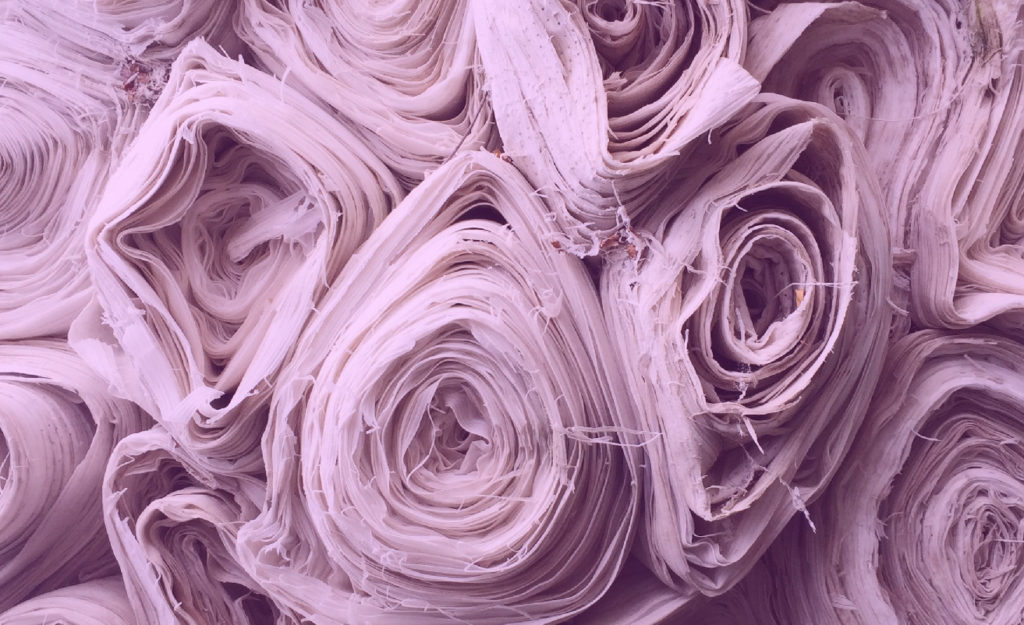It’s estimated that 60-80% of a garment’s environmental impact is decided upon during the design stage, which includes fabric selection. Sourcing sustainable fabrics for your fashion line is important to minimize your impact on the environment.
From abaca fiber to bamboo linen, from t-shirt fabrics made out of recycled cotton and hemp to spider silk tougher than steel, many sustainable fabrics are being innovated today. But it all comes down to the manufacturing process.
The fashion industry is a capital/labor-intensive business that dries up water sources, pollutes the air and soil, and raises CO2 levels. Sustainable fabric sourcing allows brands to meet environmental, social, and governance (ESG) goals while maintaining fair labor practices.
Organic Cotton
A classic fabric with a low environmental impact, organic cotton has minimal chemicals. It’s grown and processed in a way that supports the health of farmers, communities, and ecosystems. It’s also a great choice for anyone who wants to avoid harmful synthetic pesticides, which can wreak havoc on soil, water, and air quality and expose workers to dangerous toxins.
Look for fabrics with the Global Organic Textile Standard (GOTS) certification to take it further. GOTS guarantees that the fabric you’re buying has been grown, dyed, and manufactured sustainably and socially responsibly.
If you’re feeling sticker shock when browsing organic cotton options, try mixing it with other eco-friendly fabrics like linen or hemp. This will help keep your garments sleek and chic without relying on an expensive textile for most of the design. Plus, it’ll allow you to test the waters with your customers. If they like it, you can start making more of your line out of organic cotton and gradually phase out other materials.
Organic-Linen
Originally grown from the flax plant (Linum usitatissimum), organic linen is considered one of the most sustainable fabrics today. It requires less water and energy than cotton and no pesticides or chemicals during production. Look for OEKO-TEX or GOTS certification to ensure the fabric has gone through a non-harmful, chemical-free production process.
Aside from ensuring the fabric is eco-friendly, you should also seek out brands that pay fair wages to their workers and work ethically. Ideally, you’ll want to find a brand that uses organic linen and has transparency on their worker protections.
Bamboo Rayon
Bamboo is a popular fabric for sustainable clothing because it grows quickly and doesn’t require pesticides or chemical fertilizers. It is also odor-resistant and moisture-wicking. However, not all bamboo is created equal regarding sustainable fabrics.
It’s important to understand that most bamboo clothing and bedding on the market today is rayon, a semi-synthetic fiber. The first artificial cellulosic fiber, rayon, is made from regenerated cellulose. The most common regenerated cellulose used in the production of rayon is derived from wood pulp, specifically cotton linters, and is treated with acetic acid. This process releases toxic chemicals into the environment, so it’s imperative to support transparent brands about their processes and accurate labeling.
Other regenerated cellulose alternatives, such as modal and lyocell, can be more eco-friendly. Both are similar to viscose rayon, but modal is made from beech trees that can grow in various soil types and uses a less-toxic solvent than the commonly used sodium hydroxide.
Alpaca Wool
Alpaca wool is incredibly soft and warmer than sheep’s wool. It’s breathable and naturally resistant to wrinkles, making it less itchy for wearers than other wools. It also holds in heat while pushing out cold air, allowing the wearer to stay warm without overheating or sweating.
These long-legged fluffs produce some of the finest animal fibers, rivaling mohair and cashmere. However, they’re also a symbol of the exploitative and cruel fashion industry, with billions of animals being bred, enslaved, and slaughtered for their wool yearly.
Alpacas are shorn once or twice a year, in a process that’s often done by hand using indigenous techniques. The fleece is then spun, dyed, washed, and dried. It is typically twisted or “torsioned,” which strengthens the yarn. It can be blended with natural and synthetic fibers like cotton, silk, merino wool, qiviut, or spandex.
Silk
If you’re a designer, seamstress, or costumier, choosing sustainable fabrics for your fashion line is essential to your business. The fabrics you use affect the environment throughout their entire life cycle.
Traditional cotton and rayon are problematic because they consume much water, require pesticides, and produce greenhouse gases when overfarmed. Similarly, animal-based fabrics like wool and cashmere can have negative environmental impacts depending on how they’re sourced.
Fortunately, there are several sustainable alternatives to these types of natural fibers. For example, Whether starting a new clothing line or want to make your current collection more eco-friendly, this guide will show you how to scout for sustainable fabrics without paying full retail. You’ll learn what questions to ask, what red flags to watch out for, and how to find suppliers that will give you the best prices.

